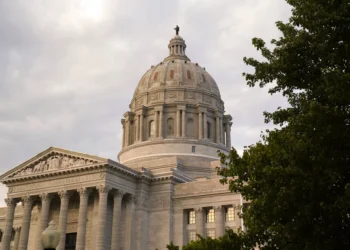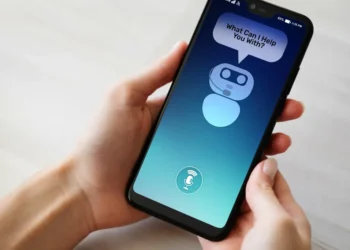Conservatives across the country are building momentum to clean up elections. Donald Trump’s proposals call for paper ballots, voter ID, and in-person voting on Election Day only. These reforms would mark a major improvement over the chaotic 2020 election — when Joe Biden somehow received more votes than any presidential candidate in history.
But tightening election procedures also risks reviving an old Democratic trick: voter suppression.
The inability to print a ballot is ultimately no different than a refusal to provide a ballot to a voter. It is voter suppression.
In an ideal system, voting would happen exclusively on paper ballots and in person. No mail-ins. No drop boxes. ID required.
However, to counter suppression efforts in Republican precincts, polls should remain open for several days — perhaps even a full week. Extending in-person voting would allow voters to push back against the tactics designed to keep them home.
I am well aware of how voter suppression works because I have the scars to prove it. When I started voting in Travis County (Austin), Texas, in the 1980s, ballot suppression in Republican precincts was an established protocol by the Democrats who ran the county. The strategy was two-pronged:
Insufficient voting booths: Conservative precincts were provided very few voting booths, causing extremely long lines. I watched many people drive up, look at the line, then drive away. Many other would-be voters already in line would finally give up and forgo voting. While my precinct had four or five booths, I’d later watch the evening news show Democratic precincts outfitted with dozens.
Ballot shortages: It was a predictable occurrence that Republican precincts would run out of ballots before the polls closed due to “unexpectedly” high turnout. Those in line could either wait for hours until someone showed up with “provisional” ballots, or they could give up. Most people would not wait in line until 10 p.m. just to cast a vote.
Not enough ballots
I was in the habit of voting first thing in the morning on Election Day to ensure I got a ballot. Even though the wait was long due to the bottleneck caused by so few voting booths, I would at least get my vote in. But the ballot I cast also resulted in a missing ballot for someone else trying to vote later in the day, as Democratic officials who ran the county made sure that there were fewer ballots than voters in my precinct.
The county elections administrator always had an excuse for the ballot shortages in Republican precincts. She’d cite a local statute that required her to allocate ballots based on average county turnout. Since Republican precincts had higher voter turnout than the county as a whole, shortages were guaranteed — by design.
When early voting finally came about several years later, I was thrilled. I was tired of battling my own county officials just to cast a Republican vote.
Decades later, these tactics are still in use.
The recent Wisconsin Supreme Court election, for example, drew national attention because the outcome could affect midterm Congressional redistricting, which could then swing control of the U.S. House of Representatives from Republican to Democrat.
On Election Day in Milwaukee, 69 of its 180 precincts reported ballot shortages, and nine precincts ran out of ballots completely. Milwaukee’s top election official offered a familiar excuse: Ballots were printed based on past turnout. But voter participation surged to 50%, far above normal for a spring election. It was “unexpected.”
Some conservatives pushing for same-day voting likely haven’t considered that those in charge of ballot preparation might simply not provide enough.
Ballot printing — or lack thereof
Another method of voter suppression involves ballot printing. If the printer “breaks,” there’s no ballot to cast. This tactic has benefited Democrats in recent elections, such as in Phoenix, Arizona’s Maricopa County, and Texas’ Harris County.
In the 2022 Arizona gubernatorial election, Republican Kari Lake narrowly lost by 17,000 votes out of 2.5 million counted ballots. Long lines due to printer problems caused many Arizonans to give up and leave before voting. Moreover, thousands of ballots that were printed could not be read by ballot-counting machines.
RELATED: Why voters are done compromising with the ‘America Last’ elite

Similarly, in the 2022 gubernatorial election in Texas, printer problems prevented many voters in Republican precincts around Houston from being able to obtain a ballot. As reported by the Houston Chronicle, a few days after the election, “More than a dozen voting locations in Harris County ran out of the paper used to print ballots in voting machines Tuesday, county officials confirmed. Some sites, poll workers and voters said, had no ballots on hand for one to two hours.”
“From our standpoint, it seems there was an attempt to make sure there were not enough ballots at Republican polls,” the chairman of the Harris County GOP told the Chronicle. The inability to print a ballot is ultimately no different than a refusal to provide a ballot to a voter. It is voter suppression.
Ample ballots, ample booths
If we are going to use all-paper ballots, states need to mandate that each precinct open on Election Day with enough printed ballots for every registered voter. Any unused ballots must be destroyed after polls close to protect election integrity.
There also must be enough voting booths to ensure that long lines don’t become a voting deterrent.
Personally, I’d prefer that in-person, paper ballot voting be allowed over several days to ensure that Democrats cannot engage in Election Day voter suppression tactics. One suppressed Republican ballot carries the same weight as one fraudulent Democratic vote stuffed in a ballot box.
















